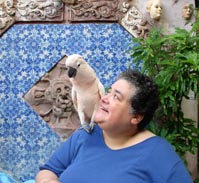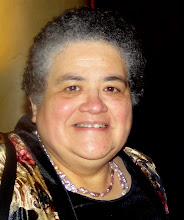| Sotomayor: What kind of Latina is she? | | |
| Our Voice - Politics http://miapogeo.com/main/content/view/1076/4609/ | |
Written by RosaMaria Pegueros | |
|
What kind of Latina is Sotomayor? The answer is both simple and complex. Judge Sonia Sotomayor has been enjoying a wave of felicitations and celebration from Latino communities across the United States. However, Gregory Rodriguez, a columnist for the Los Angeles Times and Irvine Senior Fellow and Director of the California Fellows Program at the New America Foundation, raised the question of which Latino community she actually represents. The answer to this question is both simple and complex.As a Newyorican, Judge Sotomayor represents the children of Puerto Ricans who have made their way to New York. But does she also represent Mexican-Americans whose families have been in Los Angeles since before the Mexican-American war? Salvadorans and Guatemalans who came in the wake of the civil wars in their countries? Chileans who fled Pinochet? Argentinians who fled the generals? Venezuelans who hate Hugo Chavez? Cubans whose families deserted Cuba when Fidel Castro came to power? Those are all really different populations. It’s not an apple pie, it’s a pie of which each slice is of a different type—mincemeat, apple, cherry, pecan, lemon meringue—every time you cut into the pie you call a Latino pie, you get a different kind of fruit. Not all these populations necessarily like each other or hold the same opinions on important Latino-related issues. Take immigration, for example. Those old Californians, who have accumulated wealth and power in Southern California, are not terribly happy to host the poor Mexicans and Central Americans who brave the desert and swim across the Rio Grande to come here. Many Miami Cubans, now conservative and Republican, who came here as refugees from a Communist regime, look down their noses at all who came here illegally from anywhere in Latin America. And what about the Puerto Ricans? Sure, they might be discriminated against in employment or education, but they didn’t have to sneak into the country. They are born with U.S. citizenship. They already have a leg up. Some of the South Americans, particularly from the Southern Cone, bristle at being lumped together with the Central Americans. Their families immigrated from Italy, Ireland or Spain during the 19th century, they don’t have any indigenous blood. They consider themselves European. And the Central Americans look down their noses at their Caribbean siblings because of the latter's African blood. After all, the islands were settled with Europeans and their African slaves after Columbus and his men killed most of the indigenous people. Then there are the hidden layers of Africans in Mexico, Honduras, Nicaragua and Belize... and so it goes. So who exactly does Judge Sotomayor represent? I hear the echoes of arguments in our communities over the use of “Hispanic,” “Latino,” “Chicano,” to represent us. And where does this leave Brazilians? And they Latinos? Does she represent them as well? Years ago, when my daughter was a child, we drove to visit friends in Arizona. We stopped at a Navajo reservation to have lunch and buy a doll. “Why does the lady [the sales clerk] look like Abuelita?” she asked me. My mother—-her abuelita—-is from El Salvador, and is dark-skinned. She happens to be an amalgam of several European nationalities but she looks Latina. We have no Navajo blood that I know of but she was right; she indeed did look like my mother. So I told her this: “Our ancestors came from many places, and it’s like a stew: There are pieces of carrots, onions, potatoes, and beef, and so every spoonful will be different; but it is the same stew and it all tastes the same.” Judge Sotomayor is a Puerto Rican woman born in New York. But if you dropped her in East L.A., or on 24th Street, in San Francisco, no one would give her a second glance because she is obviously one of us. When she walks into the Capitol rotunda, she will stick out like a sore thumb, because what she is not; one of the rich, privileged, white men who make up the ruling class of this country. When Judge Sotomayor describes her Mamita’s hard work in raising her and her brother to believe that if they became educated and worked hard, they could achieve and succeed, she could be any one of us; her mother could be any one of ours. And do you think that once she is on the court, all those privileged white men will remember that she is Puerto Rican rather than Mexican? Or Central American? I teach Latin American history and I can tell you that there are a lot of people who think “Central America” means Iowa and Indiana; or that Brazil is an island in the Caribbean. We are defined as much by what we are not as by what we are. Her voice in the court will bring the resonance of one who is not from a dominant culture but is also not exclusively Puerto Rican. She is our Latina, with all that name embodies. | |

